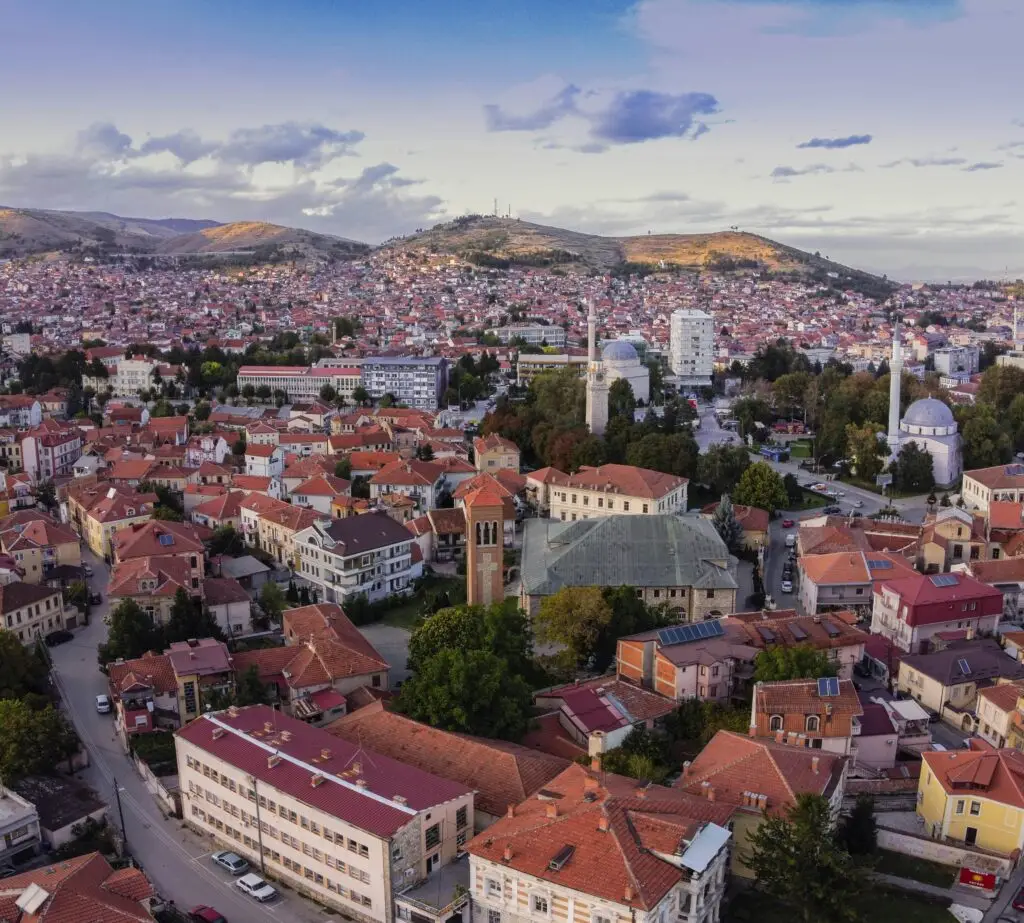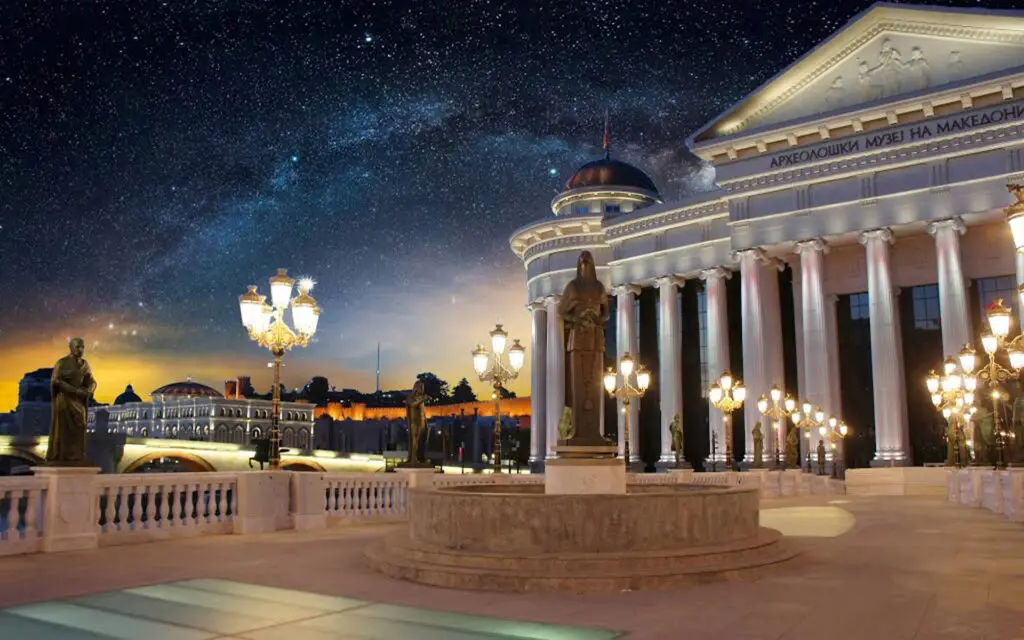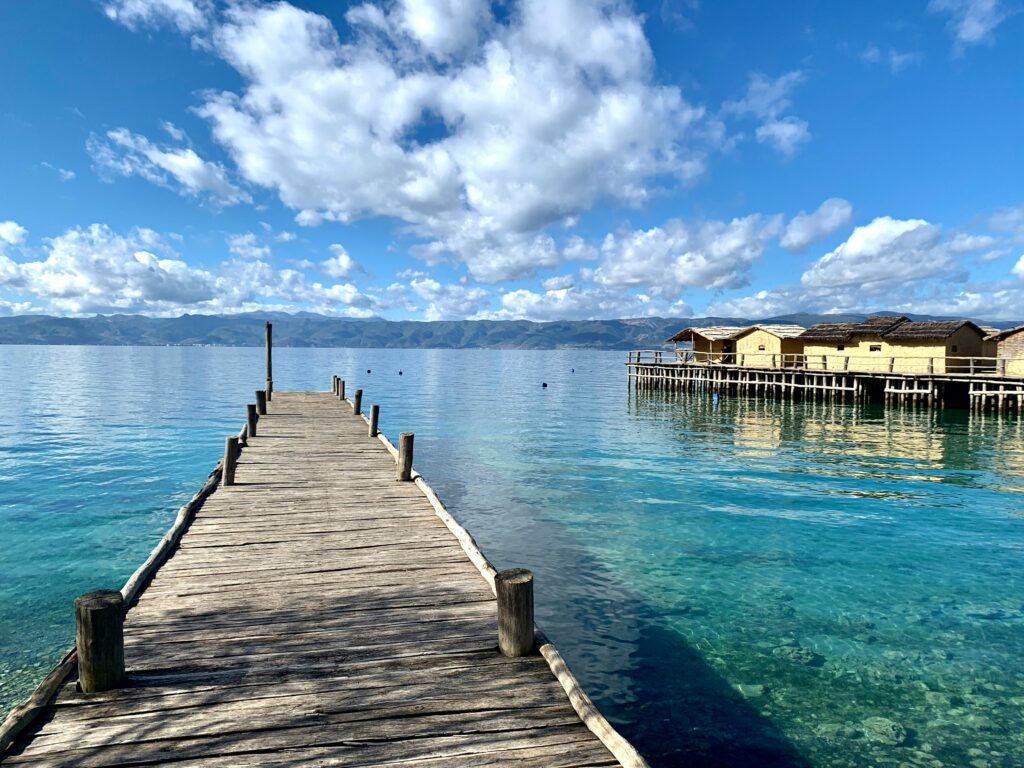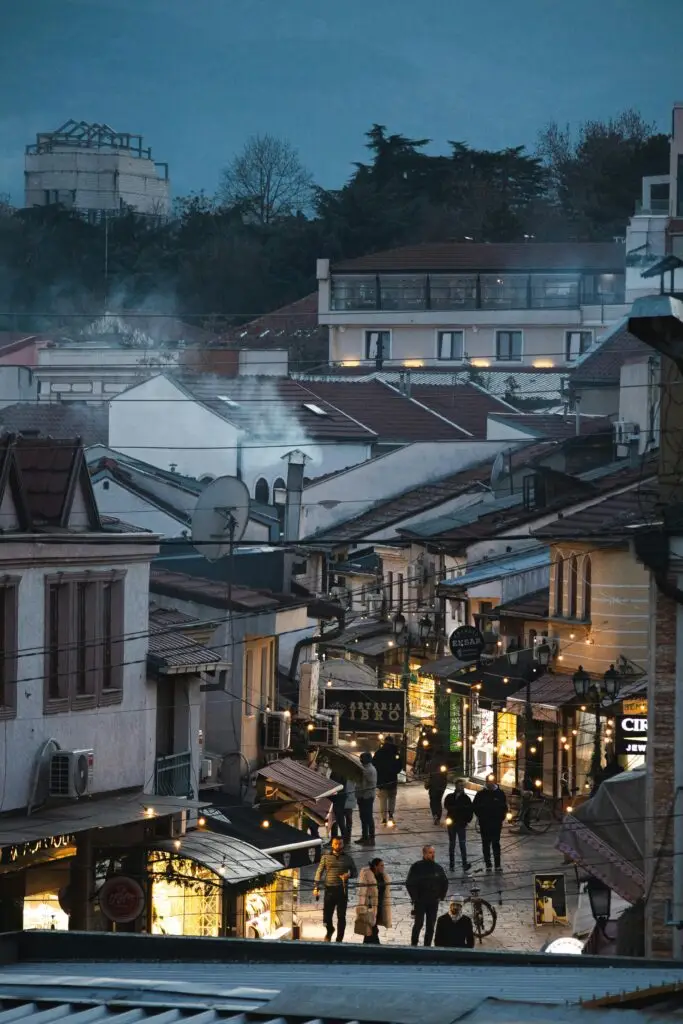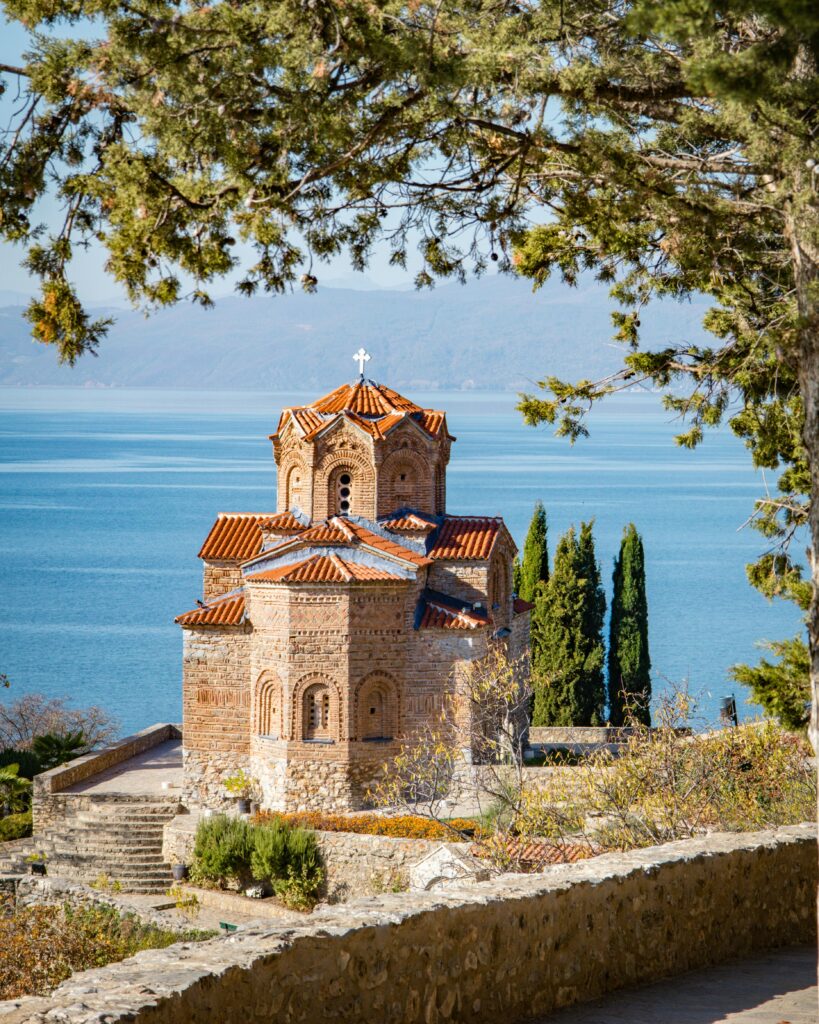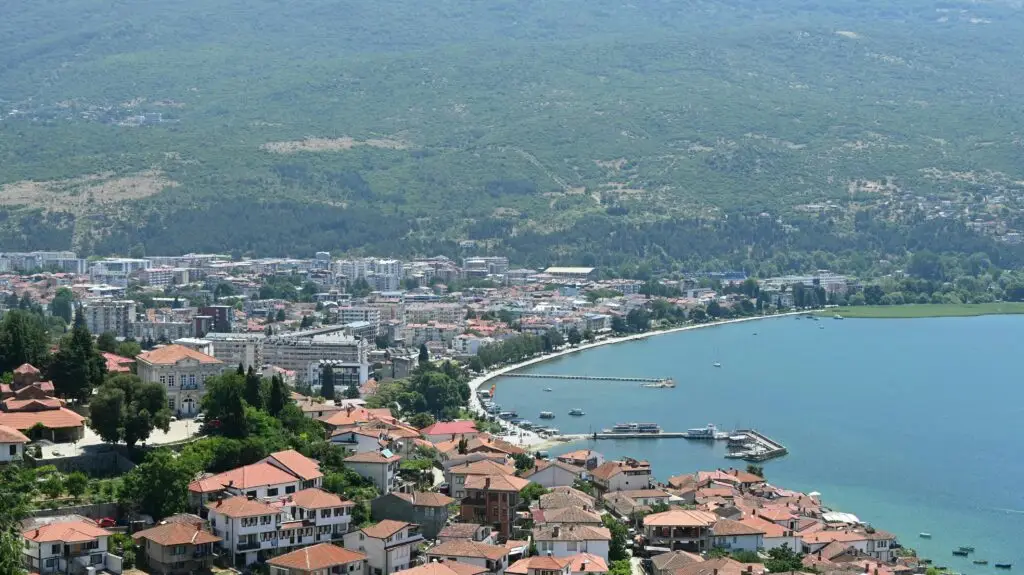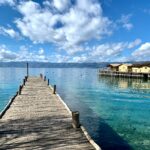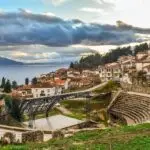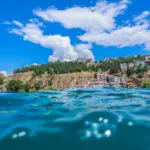Now Reading: Ohrid’s Hidden Beaches: Escaping the Crowds at Europe’s Oldest Lake
-
01
Ohrid’s Hidden Beaches: Escaping the Crowds at Europe’s Oldest Lake
Ohrid’s Hidden Beaches: Escaping the Crowds at Europe’s Oldest Lake

Beyond the bustling town beaches, Lake Ohrid conceals pristine coves and secluded swimming spots where crystal waters meet untouched shorelines – perfect retreats for those willing to venture just a little further around this ancient lake.
As the morning sun rises over the mountains of neighbouring Albania, casting golden light across Lake Ohrid’s glassy surface, Ljubaništa Beach remains blissfully empty. In a few hours, visitors might arrive from nearby villages, but for now, this stretch of smooth pebbles and crystal-clear water belongs only to early risers – and perhaps a fisherman or two, their wooden boats silhouetted against the dawn light.
While Ohrid town’s central beaches fill with sunbathers by mid-morning, those in the know seek out the lake’s hidden coves and secluded shores, where the extraordinary clarity of this ancient lake can be appreciated in tranquil surroundings. As Europe’s oldest and one of its deepest lakes – a remarkable 1.36 million years old and 288 metres at its deepest point – Ohrid deserves to be experienced in settings that honour its pristine nature.
“The lake has 87 kilometres of shoreline, but most visitors never venture beyond the same few beaches,” explains local guide Elena Petrova, who leads kayaking tours to secluded spots. “That leaves dozens of perfect swimming locations relatively untouched, even in high season.”
Perhaps the most spectacular of these hidden gems lies along the eastern shore at Gradište, where dramatic white limestone cliffs plunge directly into deep blue waters. A narrow path through aromatic pine forest leads to a series of small rocky platforms perfect for spreading a towel and spending a day alternating between swimming in the exceptionally clear water and drying in the Mediterranean sun. With no facilities or shops, preparation is essential – bring water, food, and sun protection – but the reward is a swimming experience reminiscent of Croatia’s coast without the crowds or costs.
Further south, the Bay of Bones Museum (a reconstruction of a prehistoric pile dwelling settlement) draws plenty of visitors, but few realise that just 15 minutes’ walk beyond it lies Peštani Beach, where smooth white stones create perfect entry points to waters so clear that swimmers can see fish darting around 20 metres below. “The calcium-rich rocks along this stretch naturally filter the water,” notes marine biologist Marko Dimitrov. “Combined with the lake’s natural springs, it creates water clarity that rivals any beach in the Mediterranean.”
For those seeking sandy shores rather than pebbles, the southern beaches near the Albanian border offer fine golden sand that’s especially suitable for families with small children. Ljubaništa, the last village before the border crossing, features a kilometre-long stretch where the lake bottom slopes so gradually that children can wade out 50 metres while still standing in waist-deep water.
“These southern beaches have a different character,” observes Nikola Stojanovski, whose family has operated boat tours on the lake for three generations. “The surrounding landscape is flatter, with wetlands rather than mountains coming to the shore. It creates a different ecosystem – more birds, different fish species, and warmer swimming conditions.”
Access is key to finding these hidden spots. While some require hiking or boat access only, many of the best secluded beaches can be reached by public bus from Ohrid town, with services running approximately hourly during summer months. For more flexibility, Rent-a-Bike Ohrid offers quality mountain bikes that allow visitors to explore the shoreline at their own pace, stopping whenever an enticing cove presents itself.
For the ultimate hidden beach experience, consider joining a kayak tour to reaches of shoreline completely inaccessible by land. Operators like Kayak Ohrid offer half-day excursions that combine exploration of the lake’s extraordinary underwater springs (visible as bubbling “eyes” on the lake surface) with stops at tiny beaches where the only footprints will be those of your small group.
The western shore, largely within Galičica National Park, offers perhaps the most dramatic swimming settings. Here, the mountain plunges steeply to the water, creating deep, clear conditions perfect for snorkelling. At Gradište beach, impressive rock formations create natural diving platforms, while the clarity of the water reveals the fascinating underwater topography that makes this lake so unique.
Beyond natural beauty, these hidden beaches often connect visitors with local culture in ways the busier town beaches cannot. At Trpejca, a small fishing village with a perfect crescent beach, morning visitors can watch fishermen bringing in their catch – perhaps the lake’s famous endemic trout or plašica, a small silver fish traditionally dried and served as a speciality.
“For me, these quiet beaches are where you truly connect with Ohrid’s spirit,” reflects Petrova. “When you swim in waters so ancient and clear, surrounded by mountains that have witnessed thousands of years of human history, yet in perfect natural tranquility – that’s the authentic Ohrid experience.”
As development pressure increases along certain stretches of shoreline, these hidden beaches have become not just pleasant alternatives to crowded tourist spots, but important remaining windows into the natural state of this extraordinary lake – a UNESCO World Heritage Site for both its cultural and natural significance. For visitors willing to venture just a little further around its shore, Lake Ohrid reveals swimming spots that rival Europe’s best beaches, yet remain wonderfully undiscovered.


